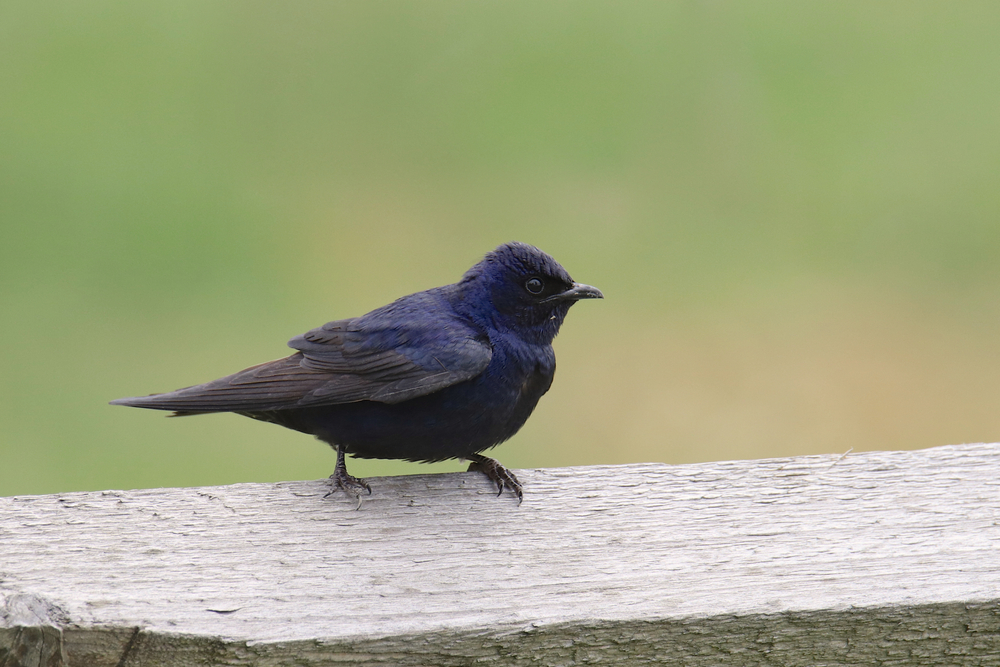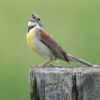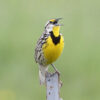Purple Martin, Progne subis
Bill Rowe
For some plants and animals, spring begins in February and proceeds through all of March; but if we take the vernal equinox (typically March 21) as the official change-of-season, the Purple Martin becomes the perfect harbinger of spring, since we begin seeing it here in central Missouri on just about that date. In fact, the birds have been on the move long before that in order to get here from South America, where they spend the winter. Martins, genus Progne, are large swallows, about nine species in all, but only this one inhabits the United States and Canada, the others being found in Middle and South America and the Caribbean. The Purple Martins that live east of the Great Plains have become totally adapted to living in bird houses and gourds provided by humans instead of the woodpecker holes they once used; the widespread provision of martin houses in towns and near homes and inns was attested by Audubon in the 1830’s. In the West, where martins are less common and more local (and of different subspecies), this conversion is occurring but much less complete—i.e., a lot of martins still nest in tree or cactus cavities. Part of the appeal of Purple Martins, besides their attractiveness and apparent “friendliness,” is their diet, made up entirely of insects including some considered pests. There is no evidence, however, that they consume a lot of mosquitos, which fly low and mostly at night, while martins feed mostly high and during the day.
IDENTIFICATION: Swallows can be tricky to identify, especially in flight against the sky, and even the Purple Martin, distinctive as it is, may not be a slam dunk. The adult male is easiest, being all dark purple-blue; at a distance it might suggest a starling, which is the same size and general shape, but the martin has a distinct notch in the tail (the starling’s is square). Female martins, when flying high and seen from below, can look somewhat like Northern Rough-winged Swallows, with darkish throats and paler bellies, but again their tails are strongly notched, and their mottled and streaked pattern and larger size will become apparent with a better view.
ST. LOUIS STATUS: Generally common wherever nest boxes have been provided (e.g., the Missouri Botanical Garden and Forest Park in the City, or Mallard Lake in the County, where St. Louis Audubon monitors the boxes). Arrives March-April, gathers into large postbreeding flocks in July, and usually leaves our area in August.
Learn more and listen to the songs and calls of Purple Martins here.
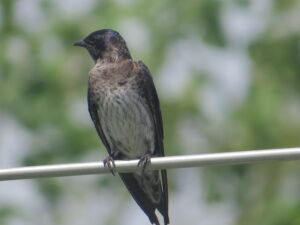

Female perched
Photo Credit: Bill Rowe
Female in flight: note notched tail
Photo Credit: Al Smith
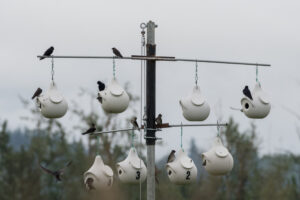
Modern martin houses

